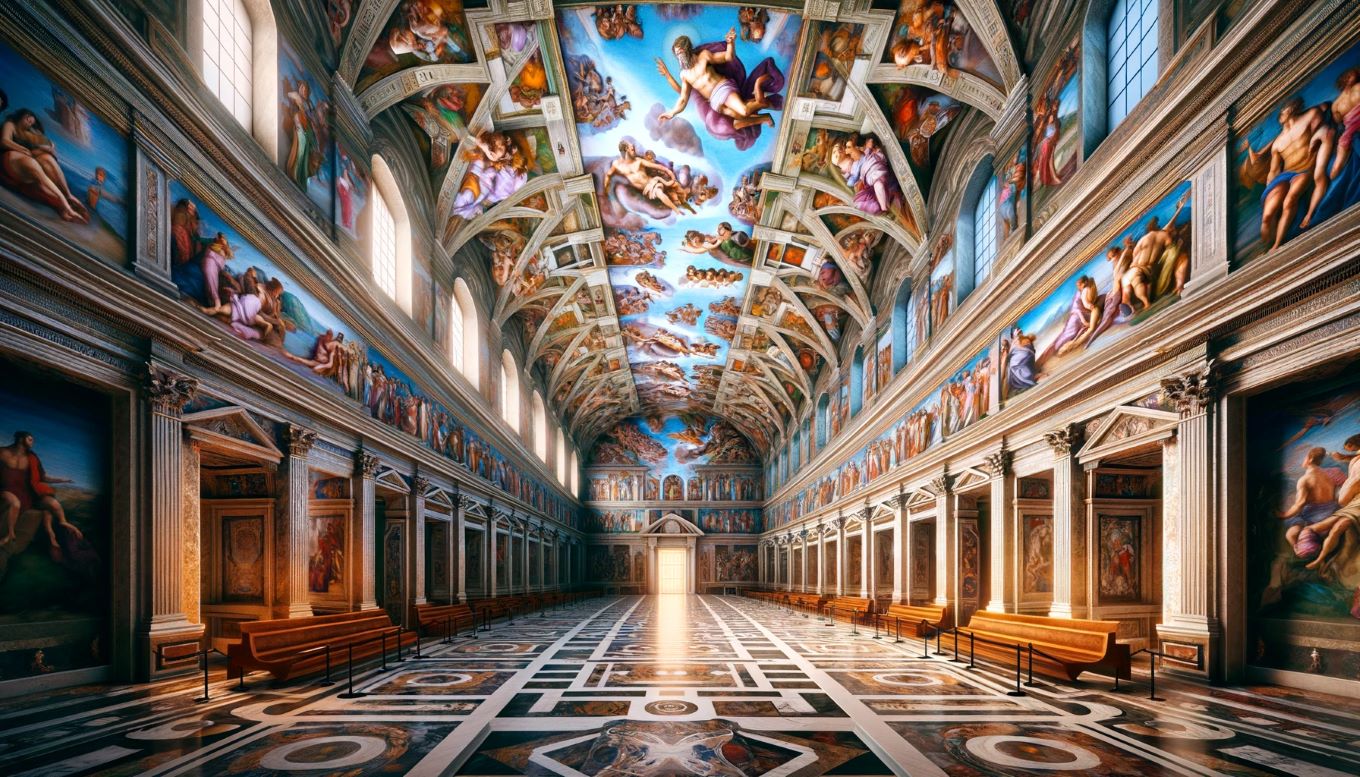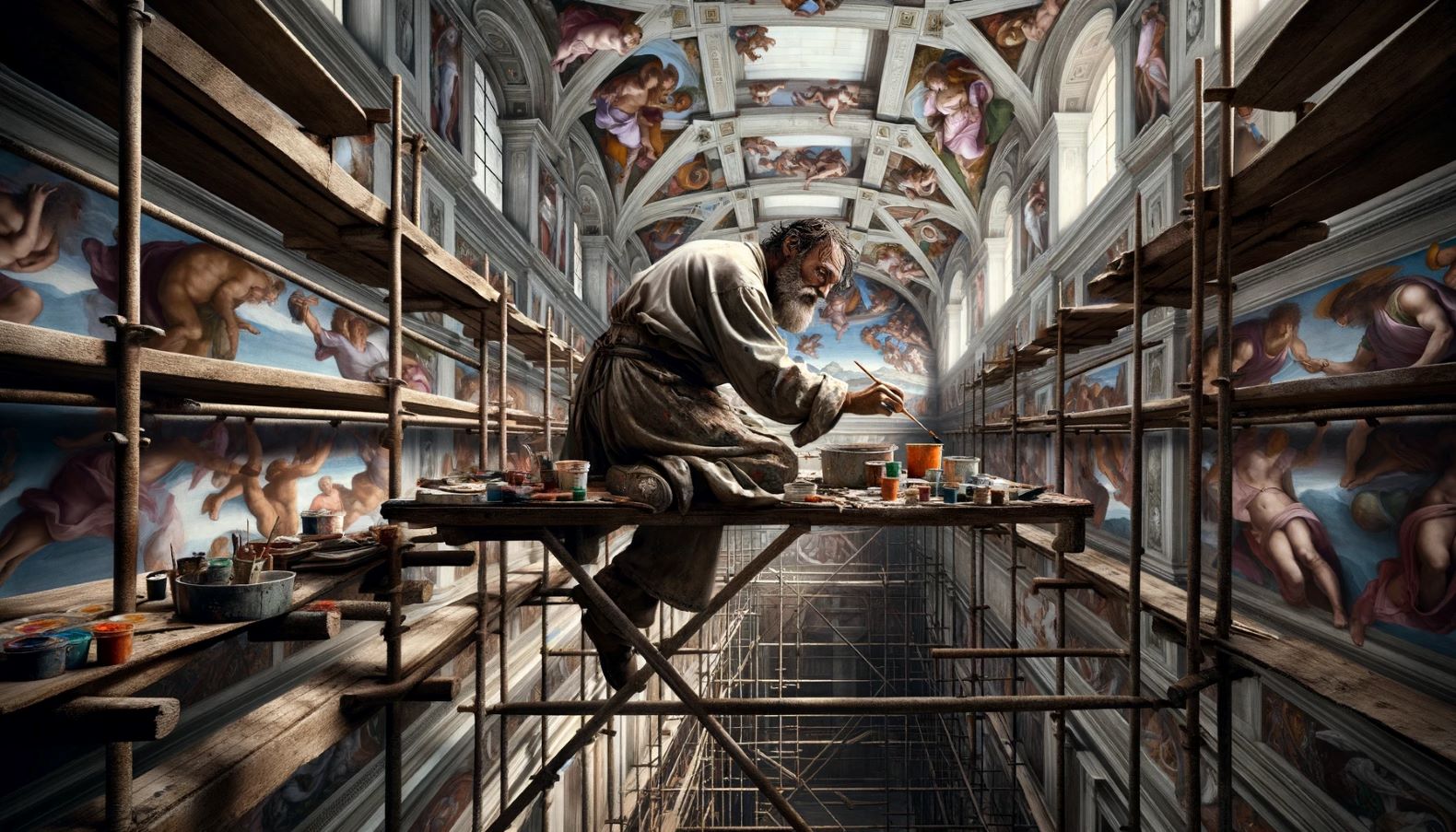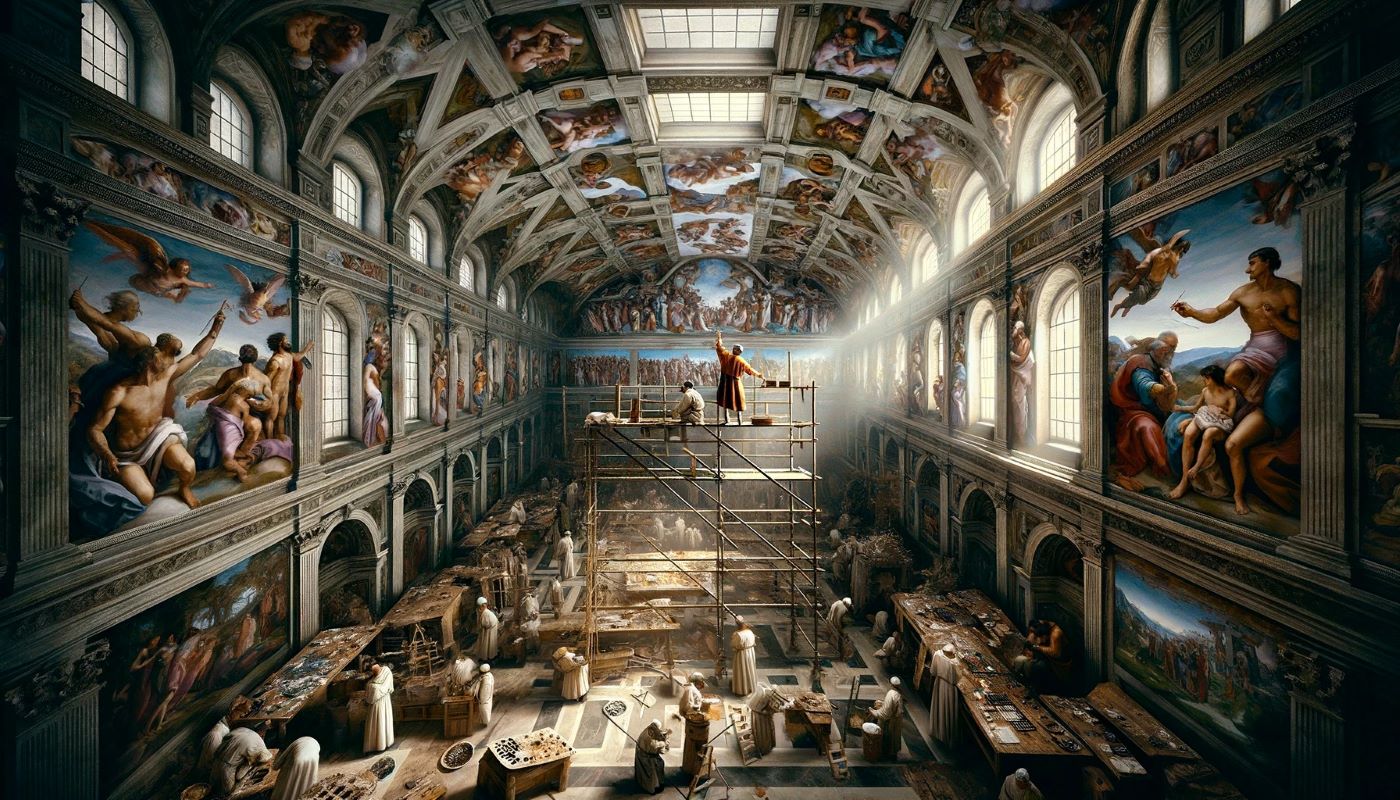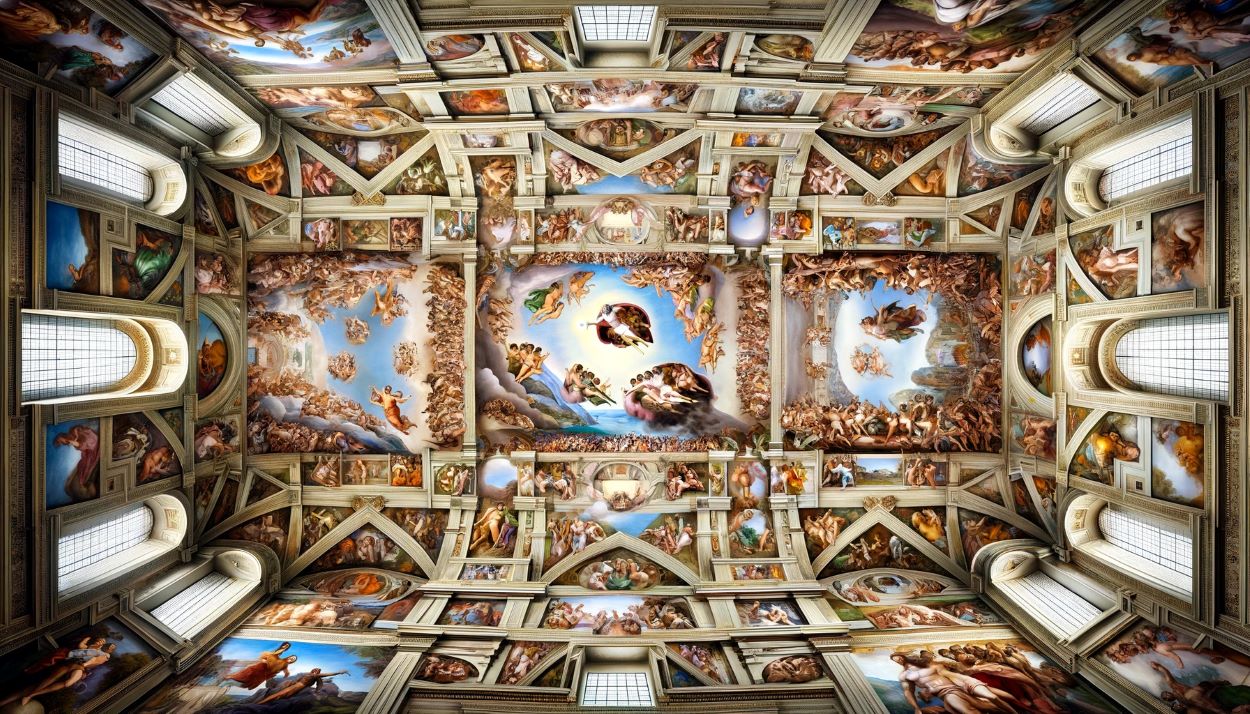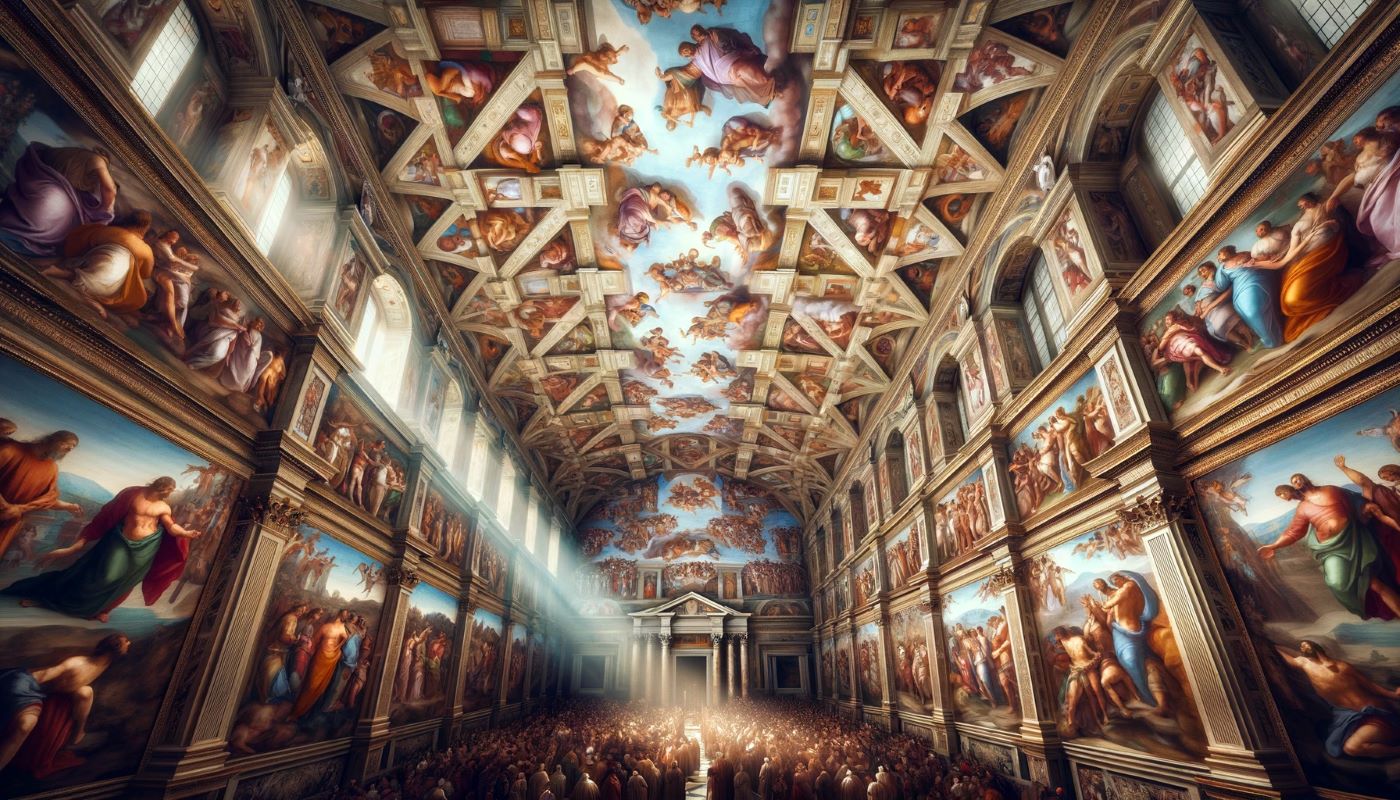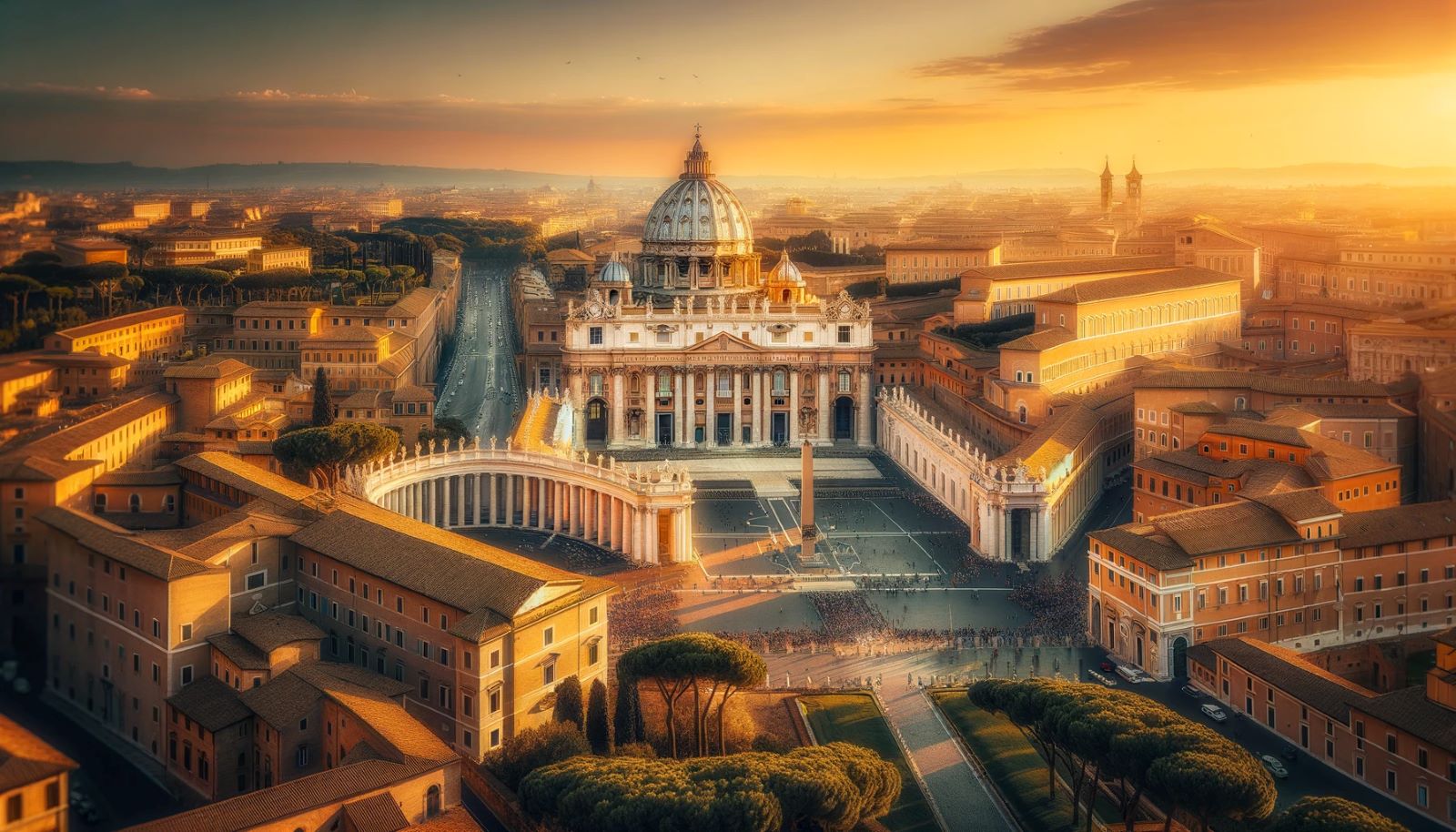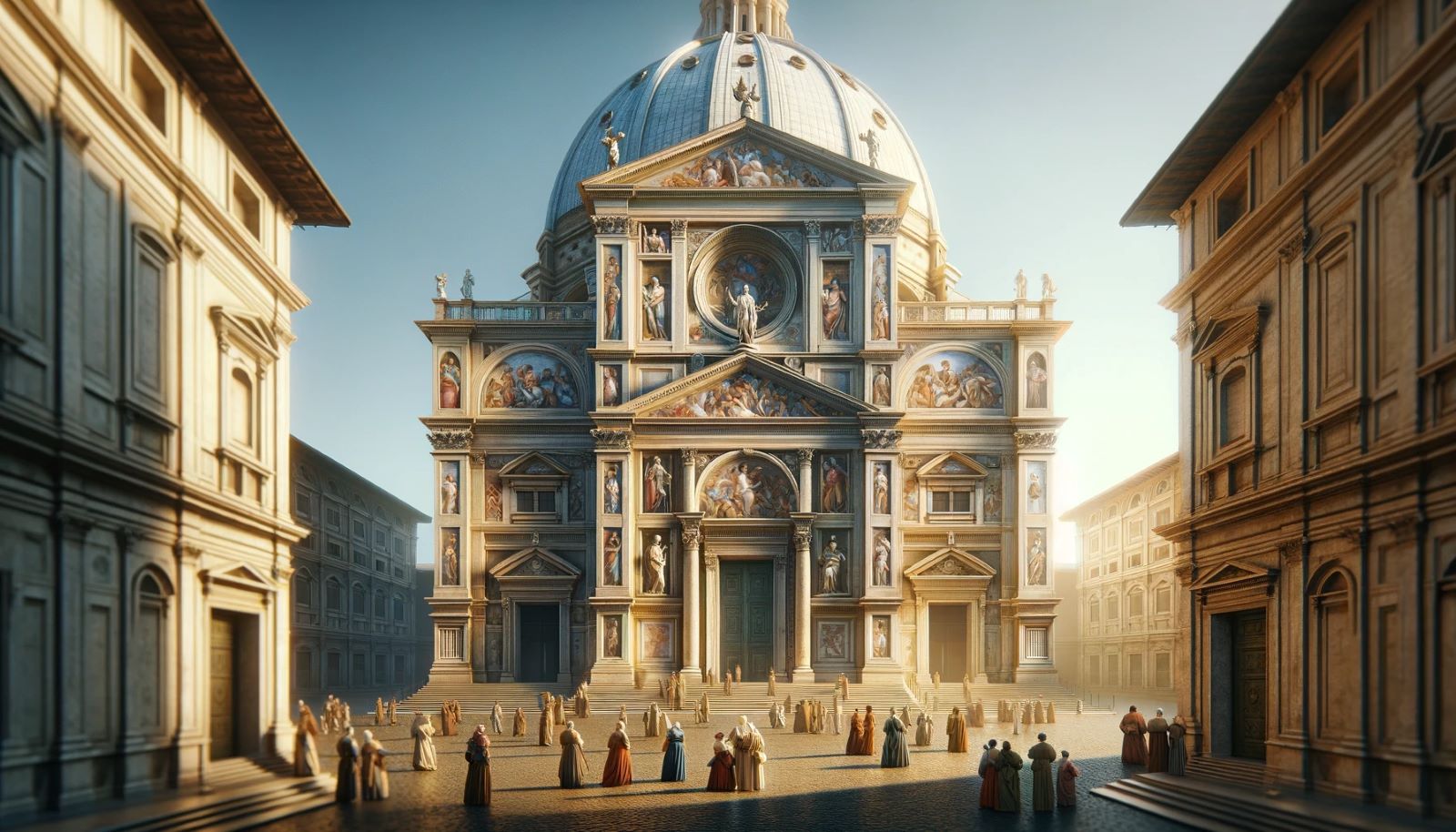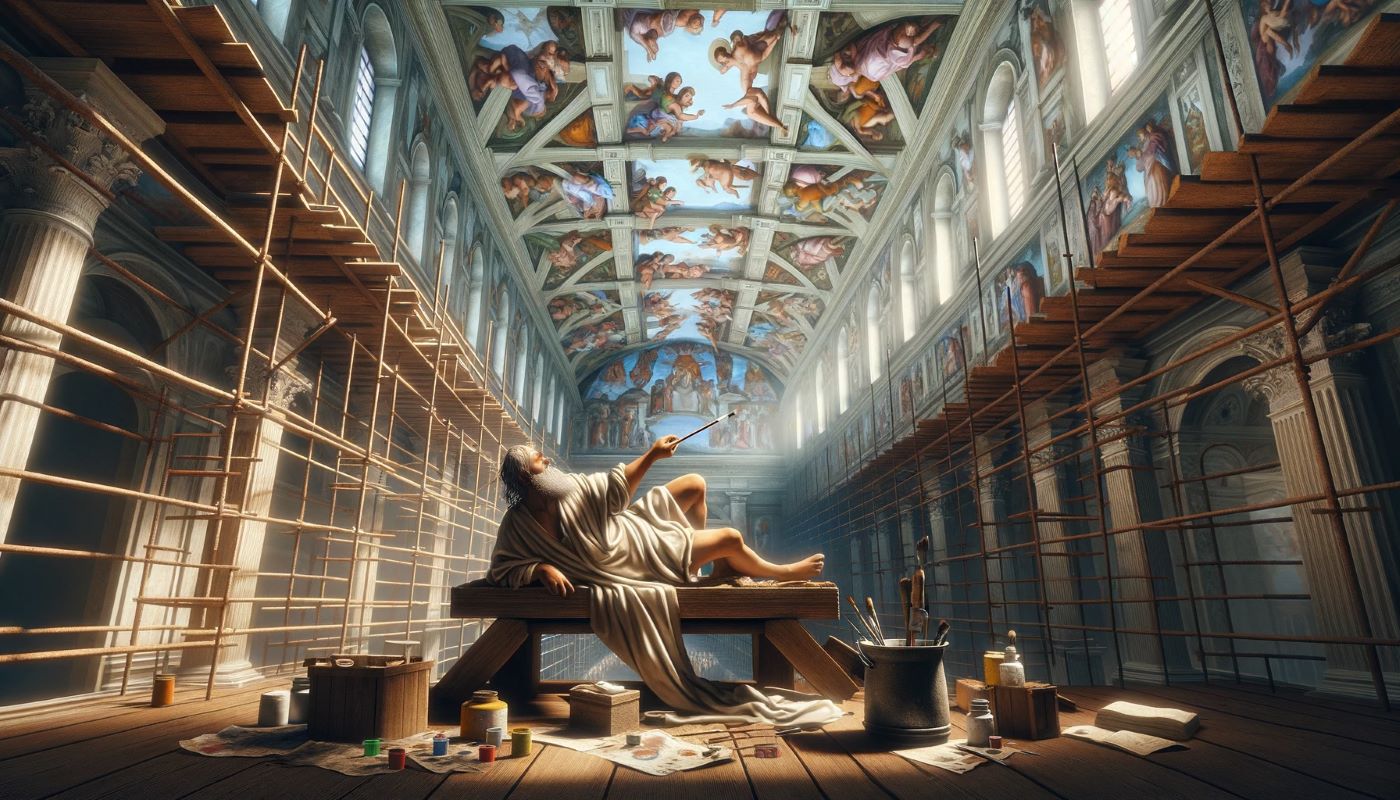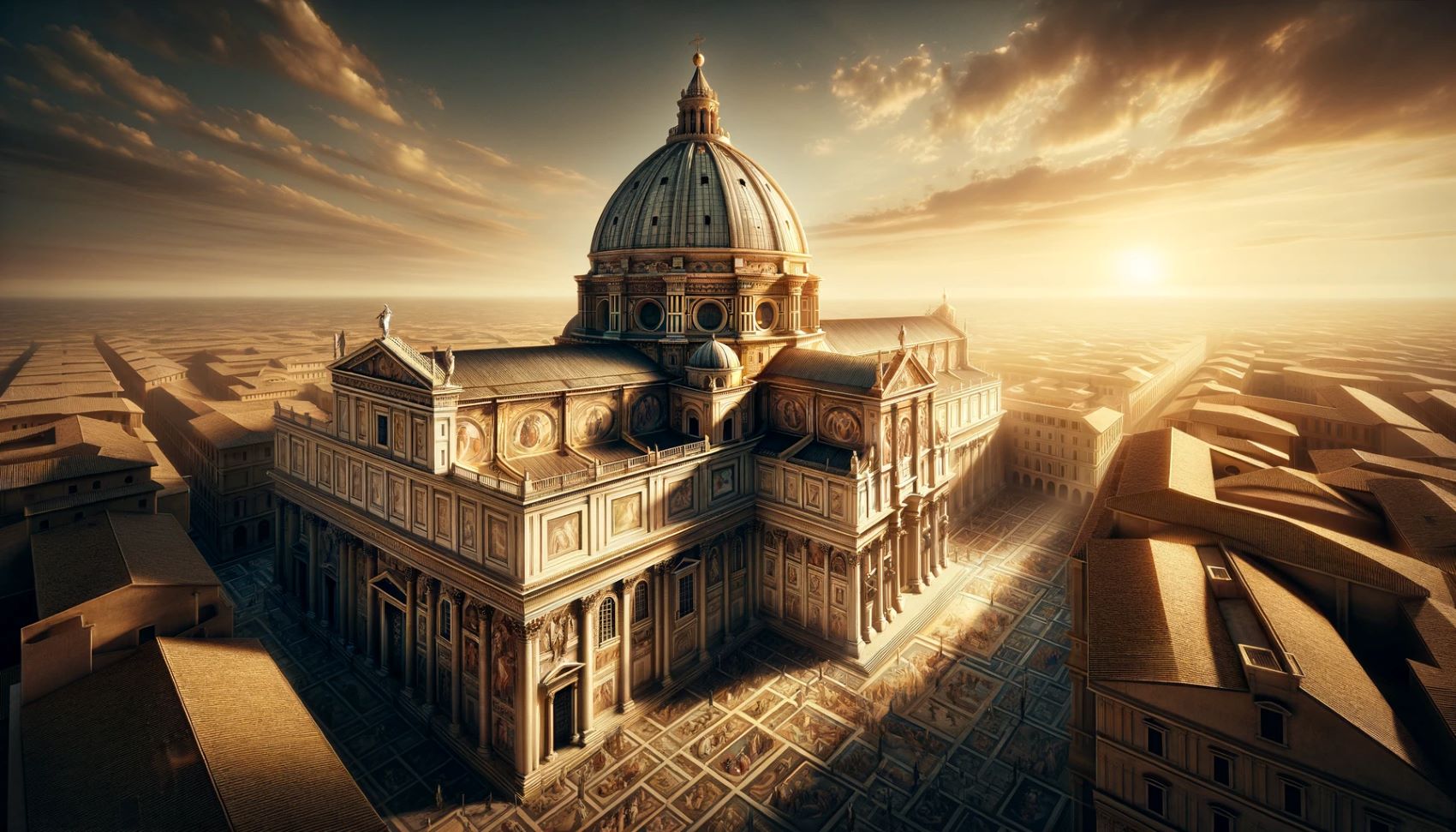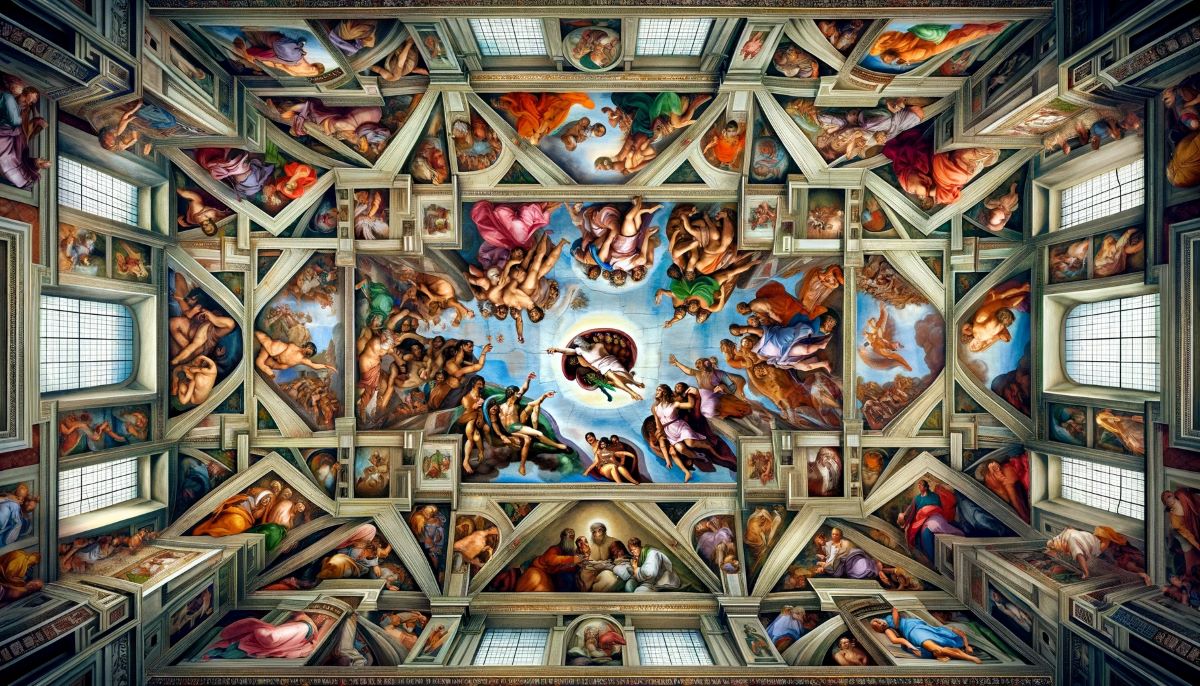Home>Arts and Culture>What Is Depicted In The Sistine Chapel


Arts and Culture
What Is Depicted In The Sistine Chapel
Published: March 4, 2024
Peter Smith, Editorial Director at Christian.net, combines deep insights into faith, politics, and culture to lead content creation that resonates widely. Awarded for his contributions to religious discourse, he previously headed a major organization for religious communicators, enhancing dialogue on faith's societal impacts.
Discover the breathtaking artistry and religious significance of the Sistine Chapel's iconic frescoes. Explore the intersection of arts and culture in this timeless masterpiece.
(Many of the links in this article redirect to a specific reviewed product. Your purchase of these products through affiliate links helps to generate commission for Christian.net, at no extra cost. Learn more)
Table of Contents
The Creation of Adam
The Creation of Adam is one of the most famous frescoes painted by the Italian artist Michelangelo. It is part of the Sistine Chapel ceiling and depicts the Biblical story of the creation of Adam from the Book of Genesis. The fresco illustrates the iconic moment when God breathes life into Adam, emphasizing the divine spark that ignites the first man's existence. The painting is renowned for its portrayal of the outstretched hands of God and Adam, which have become a symbol of humanity's connection with the divine. The Creation of Adam is a powerful representation of the belief in the creation of humankind by a higher power, and it continues to captivate and inspire viewers from around the world.
-
Iconic Depiction: The Creation of Adam is an iconic representation of the divine act of creation as described in the Bible. The fresco captures the pivotal moment when God imparts life to Adam, emphasizing the significance of human existence and the divine origin of humanity.
-
Symbolism: The outstretched hands of God and Adam in the painting symbolize the connection between the Creator and His creation. This powerful imagery conveys the belief in the spiritual bond between humanity and the divine, reflecting the profound theological significance of the artwork.
-
Artistic Mastery: Michelangelo's masterful use of color, form, and composition in The Creation of Adam showcases his unparalleled artistic talent. The fresco's intricate details and emotive portrayal of the human form demonstrate the artist's exceptional skill and his ability to convey profound spiritual themes through visual art.
-
Spiritual Inspiration: The Creation of Adam continues to inspire awe and contemplation among viewers, transcending its artistic brilliance to evoke spiritual reflection. The fresco's enduring impact lies in its ability to convey the timeless message of divine creation and the sacred nature of human life.
The Creation of Adam stands as a testament to the enduring power of art to communicate profound religious truths and to stir the hearts and minds of those who behold it. As a timeless masterpiece, it invites viewers to ponder the mysteries of creation and the profound connection between humanity and the divine.
Read more: What Is The Value Of The Sistine Chapel
The Last Judgment
The Last Judgment is a monumental fresco adorning the altar wall of the Sistine Chapel, created by the renowned artist Michelangelo. This awe-inspiring masterpiece depicts the apocalyptic scene of the Last Judgment as described in the Christian faith. The fresco portrays the second coming of Christ, where the souls of the deceased are summoned for judgment, leading to their eternal salvation or damnation. The powerful imagery of the Last Judgment conveys the profound theological concept of divine justice and the ultimate destiny of humanity. Michelangelo's masterful depiction of this sacred event has left an indelible mark on art history and continues to captivate and inspire viewers with its evocative portrayal of spiritual truth.
-
Apocalyptic Vision: The Last Judgment presents a vivid and dramatic portrayal of the apocalyptic event, with Christ at the center, surrounded by angels, saints, and the souls of the departed. The fresco captures the intensity and gravity of the divine judgment, emphasizing the solemnity of the moment and the eternal consequences for humanity.
-
Symbolism and Allegory: Michelangelo skillfully incorporates symbolic elements and allegorical imagery in the Last Judgment, conveying profound theological themes. The righteous and the damned are depicted in striking contrast, symbolizing the dichotomy of salvation and condemnation, while the presence of angels and demons underscores the spiritual warfare between good and evil.
-
Emotive Impact: The Last Judgment evokes a powerful emotional response, compelling viewers to contemplate the weighty themes of mortality, redemption, and the afterlife. The fresco's emotive portrayal of the human form and the intense expressions of the figures convey the gravity of the divine judgment and the eternal significance of the moment.
-
Artistic Mastery: Michelangelo's artistic genius is evident in the Last Judgment, as he skillfully renders the complex composition with remarkable detail and emotive power. The fresco's dynamic and monumental scale, combined with the artist's mastery of form and color, creates a visually stunning and spiritually evocative work of art.
The Last Judgment stands as a testament to Michelangelo's unparalleled talent and his ability to convey profound religious truths through visual art. Its enduring impact lies in its ability to inspire contemplation on the profound themes of divine judgment, redemption, and the ultimate destiny of humanity.
The Ceiling Frescoes
The ceiling of the Sistine Chapel is adorned with a series of breathtaking frescoes that represent some of the most iconic and influential works of art in history. Executed by the masterful hands of Michelangelo, these frescoes depict a sweeping narrative that encompasses various scenes from the Book of Genesis, offering a visual representation of the creation of the world, the fall of humanity, and the promise of redemption. The intricate and vibrant frescoes cover a vast expanse of the chapel's ceiling, immersing viewers in a rich tapestry of religious symbolism, profound theological themes, and timeless artistic brilliance.
Creation of the Heavens and Earth
The central panel of the ceiling frescoes features the depiction of the creation of the heavens and the earth, a monumental scene that sets the stage for the unfolding narrative of Genesis. Michelangelo's masterful portrayal captures the divine act of creation, with God extending his hand in a gesture of power and authority, bringing forth the celestial realms and the terrestrial world in a symphony of vibrant colors and dynamic forms.
The Fall of Adam and Eve
Moving along the expanse of the ceiling, the frescoes also illustrate the tragic episode of the fall of Adam and Eve, depicting the pivotal moment when humanity succumbs to temptation and experiences the rupture of its harmonious relationship with the divine. The emotive and evocative portrayal of this profound event serves as a poignant reminder of the fragility of human nature and the consequences of disobedience.
Read more: When Was The Sistine Chapel Restored
The Promise of Redemption
Amidst the scenes of human frailty and divine judgment, the ceiling frescoes also convey the promise of redemption and hope for humanity. The inclusion of episodes such as the sacrifice of Noah and the prophetic visions of the future deliver a message of divine mercy and the enduring covenant between God and humanity, offering a glimpse of the redemptive narrative that unfolds throughout the biblical account.
Symbolism and Spiritual Allegory
Throughout the ceiling frescoes, Michelangelo employs a rich tapestry of symbolism and spiritual allegory to convey profound theological truths and moral lessons. The intricate details and symbolic elements woven into the frescoes invite viewers to engage in contemplation and reflection, unraveling the layers of meaning and significance embedded within each scene.
Artistic Legacy and Cultural Impact
The ceiling frescoes of the Sistine Chapel stand as a testament to Michelangelo's unparalleled artistic genius and his ability to transcend the boundaries of time and space through visual storytelling. The enduring legacy of these frescoes lies not only in their artistic mastery but also in their profound impact on the cultural and religious landscape, inspiring generations of viewers and leaving an indelible mark on the history of art and spirituality.
The ceiling frescoes of the Sistine Chapel continue to captivate and inspire visitors from around the world, inviting them to immerse themselves in the timeless beauty and profound spiritual depth of Michelangelo's magnum opus.
The Sistine Chapel Architecture
The Sistine Chapel, located within the Vatican City, is renowned for its architectural grandeur and historical significance. Designed by a team of prominent architects, including Baccio Pontelli and Giovanni dei Dolci, the chapel exhibits a harmonious blend of Renaissance and Gothic architectural styles, reflecting the cultural and artistic influences of its time.
Read more: How Was The Sistine Chapel Restored
Architectural Elements
The exterior of the Sistine Chapel showcases a simple yet elegant façade, characterized by its classic proportions and restrained ornamentation. The harmonious symmetry of the building, with its arched windows and pilasters, exudes a sense of timeless grace and dignity. The chapel's architectural design emphasizes the principles of balance, proportion, and harmony, creating a space that is both aesthetically pleasing and spiritually evocative.
Interior Design
Stepping into the interior of the Sistine Chapel, visitors are greeted by a breathtaking display of architectural splendor. The soaring vaulted ceiling, adorned with intricate ribbing and decorative elements, creates a sense of verticality and grandeur, drawing the eye upward toward the heavens. The chapel's interior layout, with its central nave and side aisles, provides a sense of spatial hierarchy and ceremonial procession, reflecting the architectural conventions of sacred spaces.
Iconic Features
One of the most iconic features of the Sistine Chapel is its magnificent ceiling, adorned with the masterful frescoes of Michelangelo. The architectural design of the ceiling, with its expansive surface and carefully crafted framework, serves as a monumental canvas for the artist's visionary creations, enhancing the overall aesthetic and spiritual impact of the space.
Acoustic and Lighting
The architectural design of the Sistine Chapel also takes into account acoustic and lighting considerations, creating an environment conducive to sacred music and liturgical ceremonies. The chapel's acoustics, characterized by its reverberant sound and clarity, contribute to the ethereal ambiance of choral performances and sacred chants. Additionally, the strategic placement of windows and the use of natural light infuse the interior with a sense of divine illumination, enhancing the spiritual experience of visitors.
Cultural and Historical Significance
Beyond its architectural beauty, the Sistine Chapel holds immense cultural and historical significance as a site of papal ceremonies, artistic patronage, and religious devotion. The chapel's architectural design reflects the aspirations and values of the Renaissance era, serving as a testament to the enduring legacy of human creativity and spiritual expression.
The Sistine Chapel's architectural splendor continues to inspire awe and reverence, inviting visitors to marvel at the harmonious fusion of art, architecture, and faith within its sacred walls.
The Sistine Chapel as a Religious Site
The Sistine Chapel stands as a revered sanctuary of religious significance, serving as a place of profound spiritual contemplation, sacred rituals, and artistic expression. As a religious site, the chapel embodies the rich tapestry of Christian faith and tradition, offering a space where the divine and the human converge in a harmonious union of worship and artistic devotion.
Spiritual Center
The Sistine Chapel holds a central place in the spiritual life of the Catholic Church, serving as the site of papal ceremonies, including the papal conclave for the election of a new pope. The chapel's sacred function as the venue for the most solemn and significant events in the life of the Church underscores its role as a spiritual center of immense importance and reverence.
Divine Inspiration
The chapel's interior, adorned with magnificent frescoes and ornate decorations, serves as a source of divine inspiration and spiritual upliftment for visitors and worshippers. The awe-inspiring beauty of the artistic masterpieces, coupled with the ethereal ambiance of the sacred space, creates an environment conducive to prayer, meditation, and the contemplation of divine mysteries.
Read more: How Big Is The Sistine Chapel Ceiling
Religious Artistry
The Sistine Chapel stands as a testament to the transcendent power of religious artistry, with its walls and ceiling adorned with masterful works of Renaissance art. The frescoes, including Michelangelo's iconic creations, convey profound religious narratives and theological truths, inviting viewers to engage with the sacred stories and symbols depicted within the chapel's hallowed confines.
Pilgrimage Destination
The chapel's status as a pilgrimage destination draws countless visitors from around the world, who journey to experience the spiritual grandeur and historical legacy of this revered site. Pilgrims and tourists alike seek to immerse themselves in the religious aura of the chapel, seeking solace, inspiration, and a deeper connection to their faith within its sacred precincts.
Living Heritage
The Sistine Chapel represents a living heritage of faith, art, and culture, embodying the enduring legacy of religious devotion and artistic expression. Its continued relevance as a religious site underscores its capacity to transcend the boundaries of time and space, offering a timeless sanctuary where the human spirit encounters the divine in a profound and transformative manner.
The Sistine Chapel, as a religious site, stands as a testament to the enduring power of faith, art, and human creativity, inviting all who enter its sacred space to partake in the timeless dialogue between the earthly and the divine.
